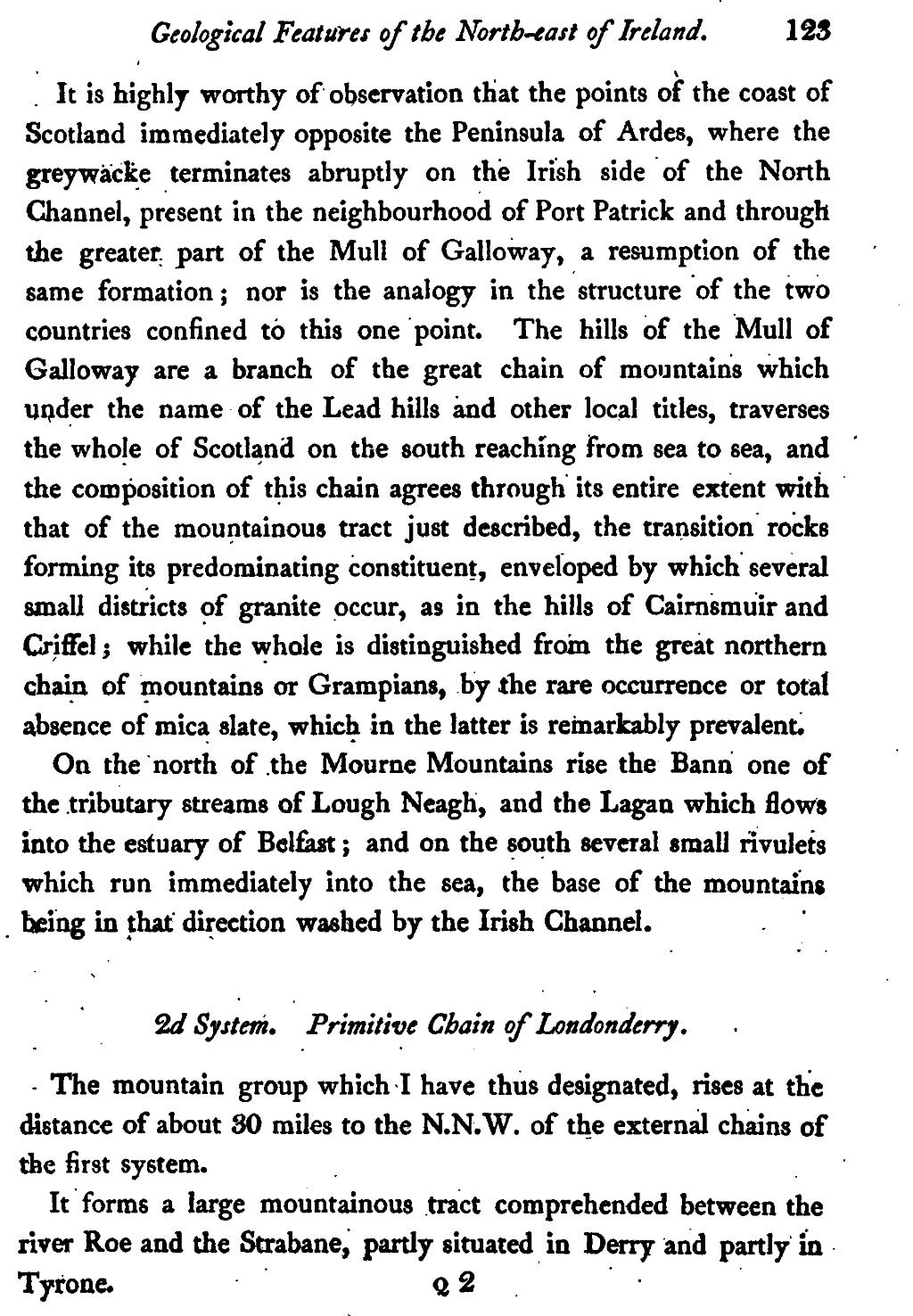It is highly worthy of observation that the points of the coast of Scotland immediately opposite the Peninsula of Ardes, where the greywacke terminates abruptly on the Irish side of the North Channel, present in the neighbourhood of Port Patrick and through the greater part of the Mull of Galloway, a resumption of the same formation; nor is the analogy in the structure of the two countries confined to this one point. The hills of the Mull of Galloway are a branch of the great chain of mountains which under the name of the Lead hills and other local titles, traverses the whole of Scotland on the south reaching from sea to sea, and the composition of this chain agrees through its entire extent with that of the mountainous tract just described, the transition rocks forming its predominating constituent, enveloped by which several small districts of granite occur, as in the hills of Cairnsmuir and Criffel; while the whole is distinguished from the great northern chain of mountains or Grampians, by the rare occurrence or total absence of mica slate, which in the latter is remarkably prevalent.
On the north of the Mourne Mountains rise the Bann one of the tributary streams of Lough Neagh, and the Lagan which flows into the estuary of Belfast; and on the south several small rivulets which run immediately into the sea, the base of the mountains being in that direction washed by the Irish Channel.
2d System. Primitive Chain of Londonderry.
The mountain group which I have thus designated, rises at the distance of about 30 miles to the N.N.W. of the external chains of the first system.
It forms a large mountainous tract comprehended between the river Roe and the Strabane, partly situated in Derry and partly in Tyrone.
